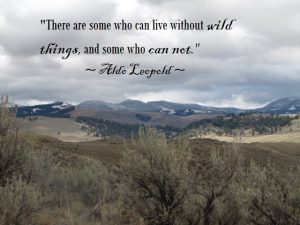Over the last ten weeks, I have learned much more about Yellowstone than I ever thought existed. During our time in the classroom, we learned about the areas of the park we would be visiting. We learned about the different things to see and know about each of those locations. The videos we watched in class informed us about the different fauna of the Greater Yellowstone Ecosystem and how the topography of the land determines what time of year you can find select species. The Greater Yellowstone Ecosystem extends past the boundaries of Yellowstone National Park, into Idaho, Montana, and down lower into Wyoming. The animals are not kept inside the park. They are free to move to and from lands outside the park’s boundaries. Of course, outside of the park, their safety from human impacts cannot be guaranteed like it can when they are in the park. The flora and fauna inside the park affect the rest of the ecosystem outside the park with things like brucellosis, wolves preying on cattle and other livestock, and bears, elk, and bison wandering into areas that they should not be in.
The people of Montana, Wyoming, and Idaho have mixed feelings about the fauna from inside the park wandering onto personal property and causing damage. Some take it in stride and cope with it because they understand the need for these animals to remain alive and well. Others would rather see the problem animals dealt with permanently, removing them so that there is no risk of them affecting their daily lives.
To each their own opinion, but I have enjoyed getting to learn about the different challenges that organisms in the GYE face. Ecosystems are complex and it takes a lot to manage them properly. The research and work that wildlife managers and other scientists do in Yellowstone are important to conserving this area of wilderness for generations to come. They have an extremely important niche to fill and they are needed. This was a great experience, both in the classroom and the field experience. We were able to visit with professionals and learn about unique dynamics that the majority of us as Fisheries & Wildlife majors have learned about in the classroom. We applied our knowledge and also learned more from our guide, Shauna, and others. We were able to see some areas of the park that many people rarely see, that was special. I hope to go back some day to see how the park has changed and how it has stayed the same in ways. It’s a special place.
